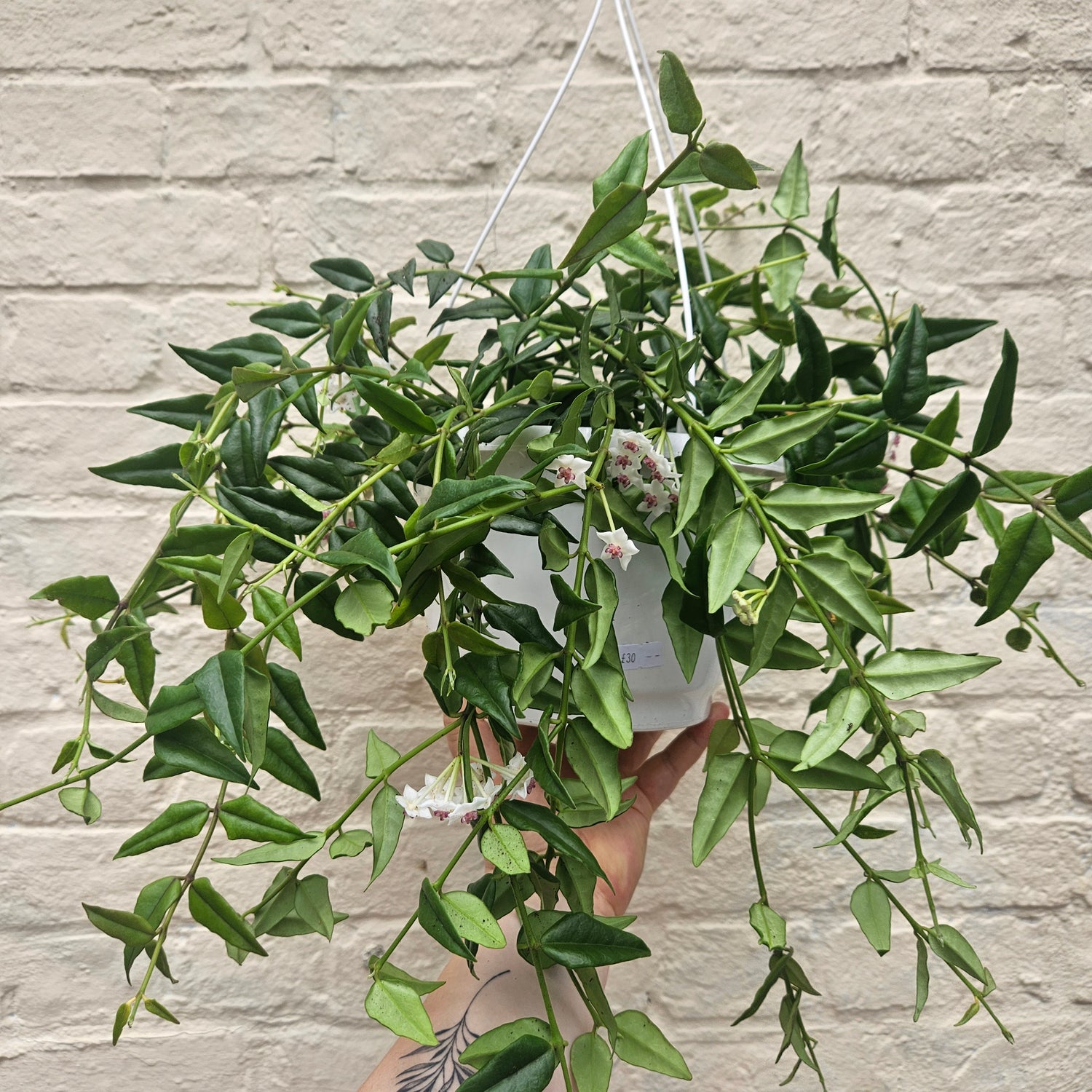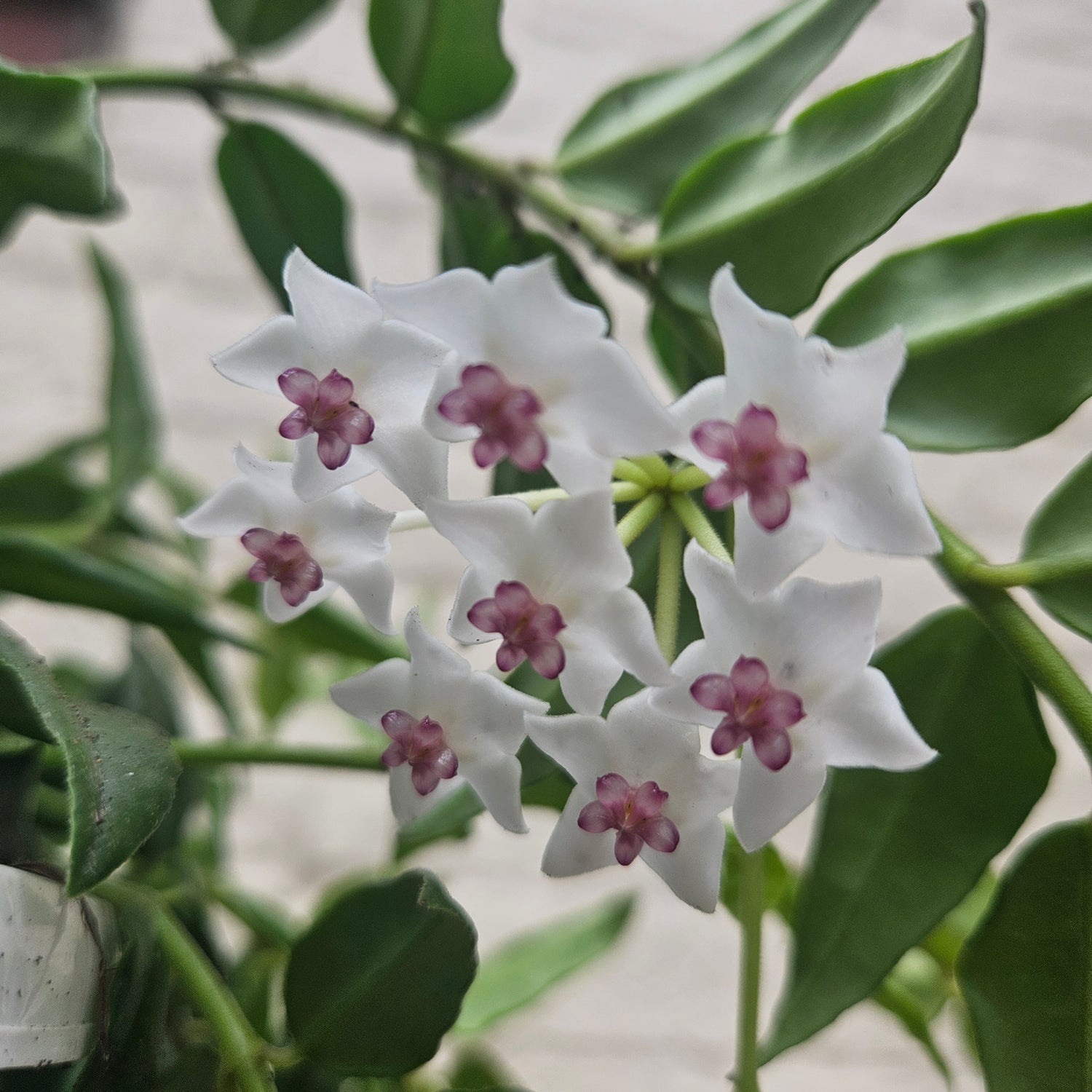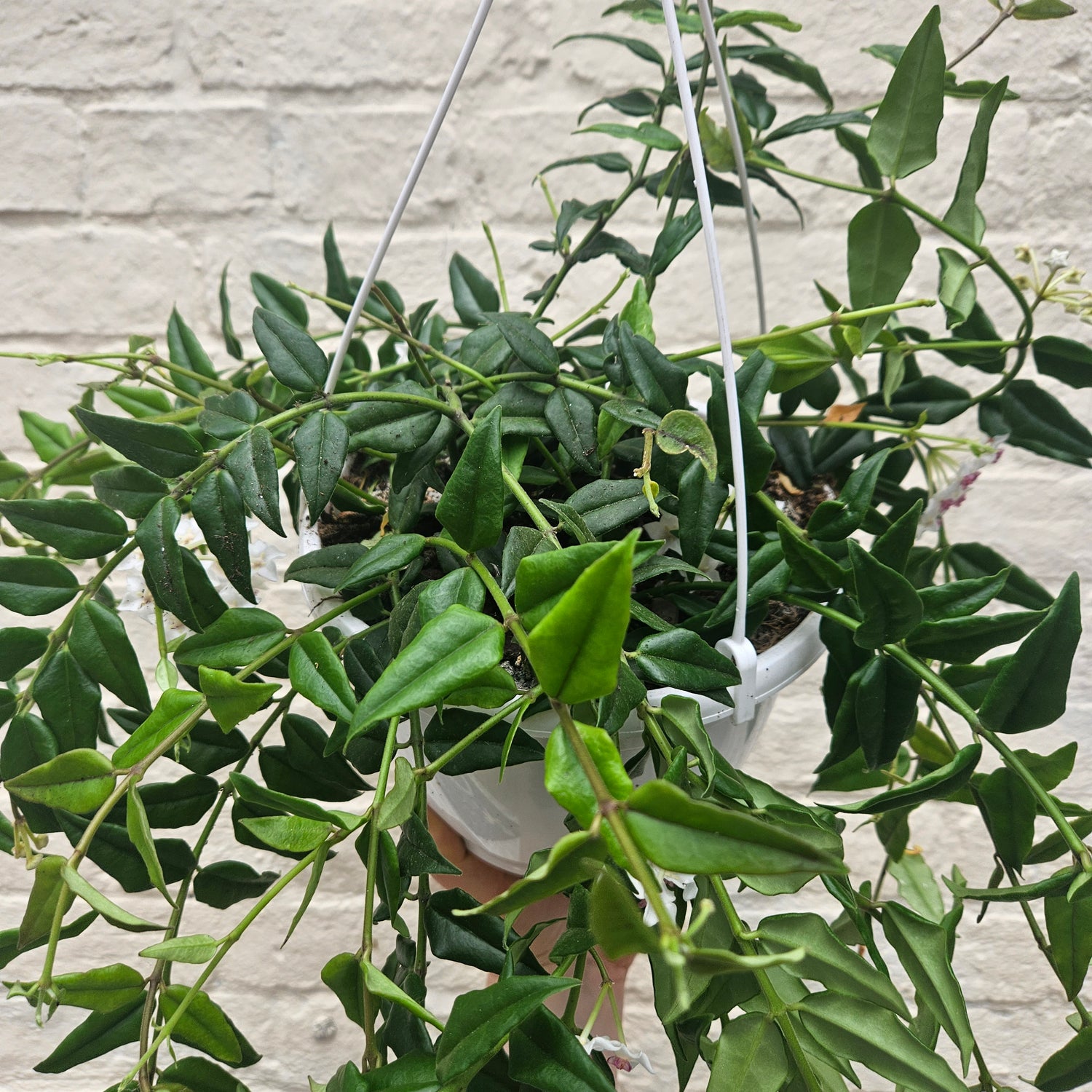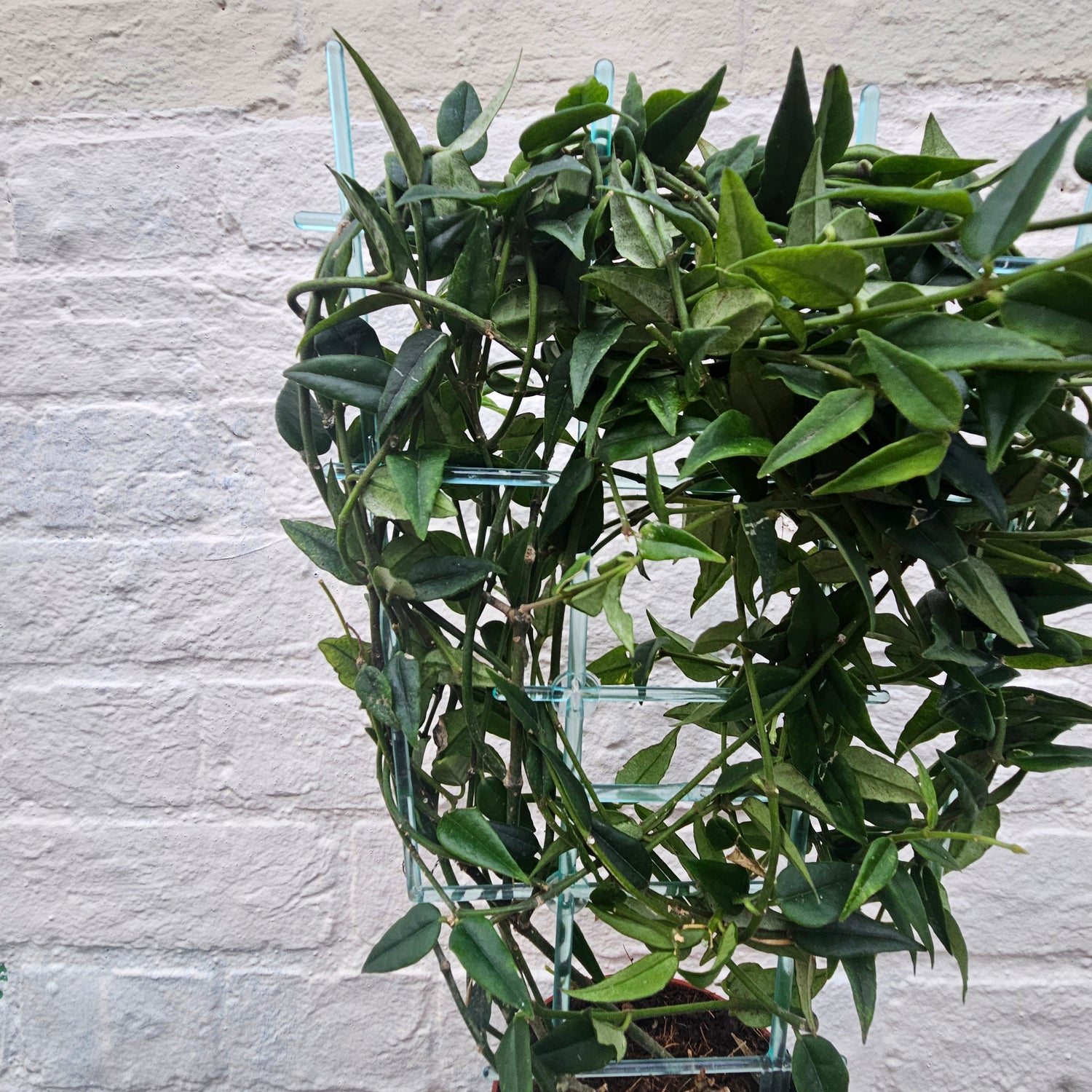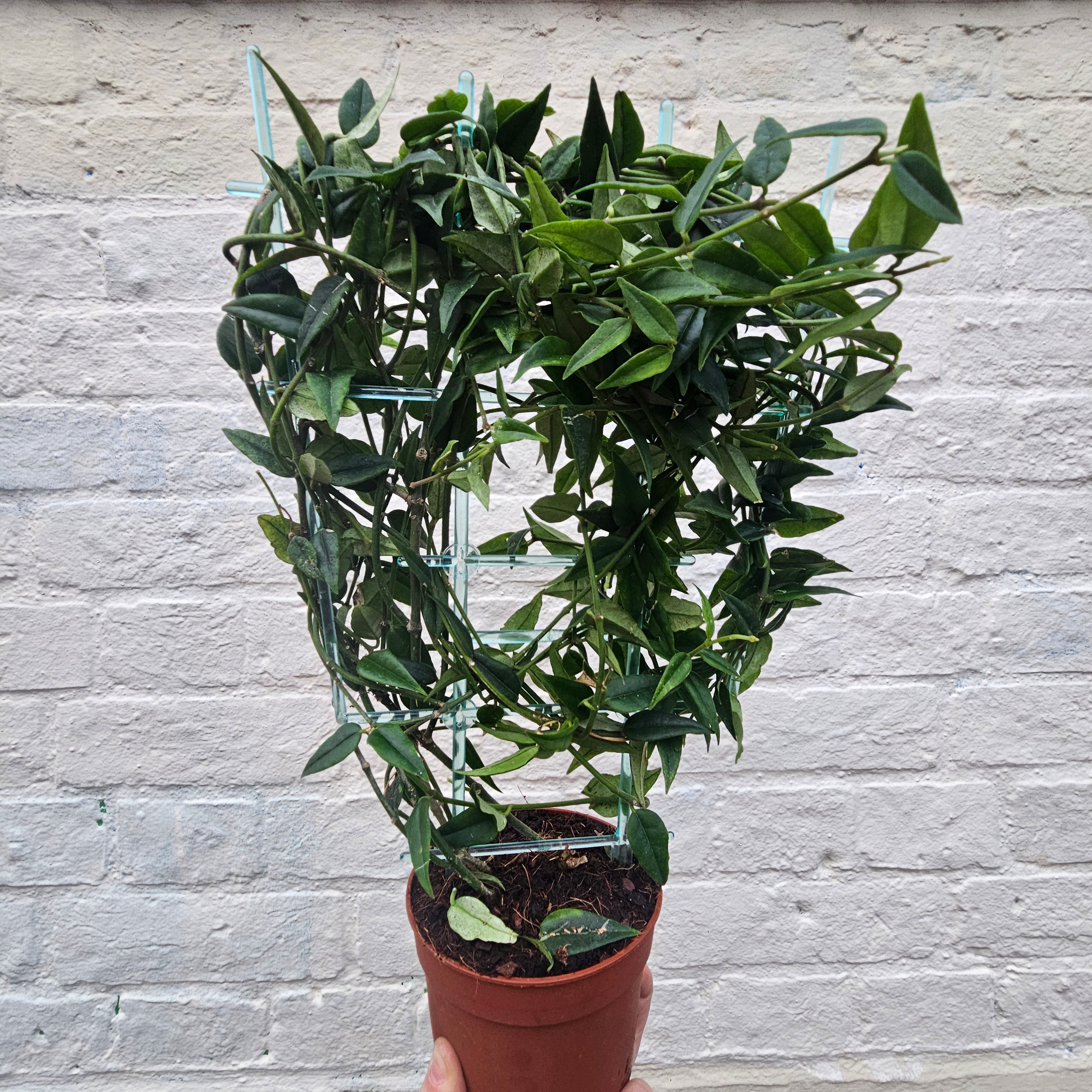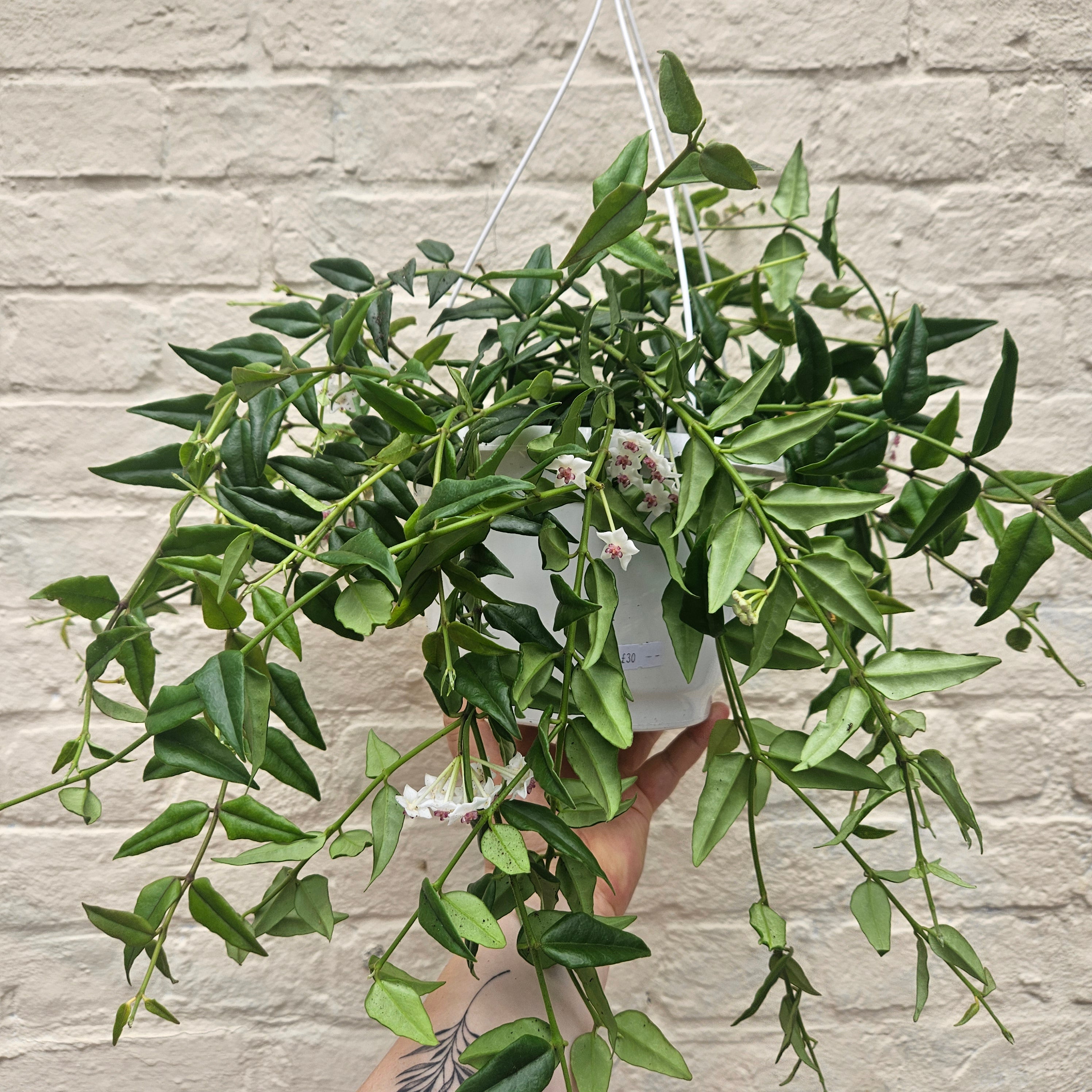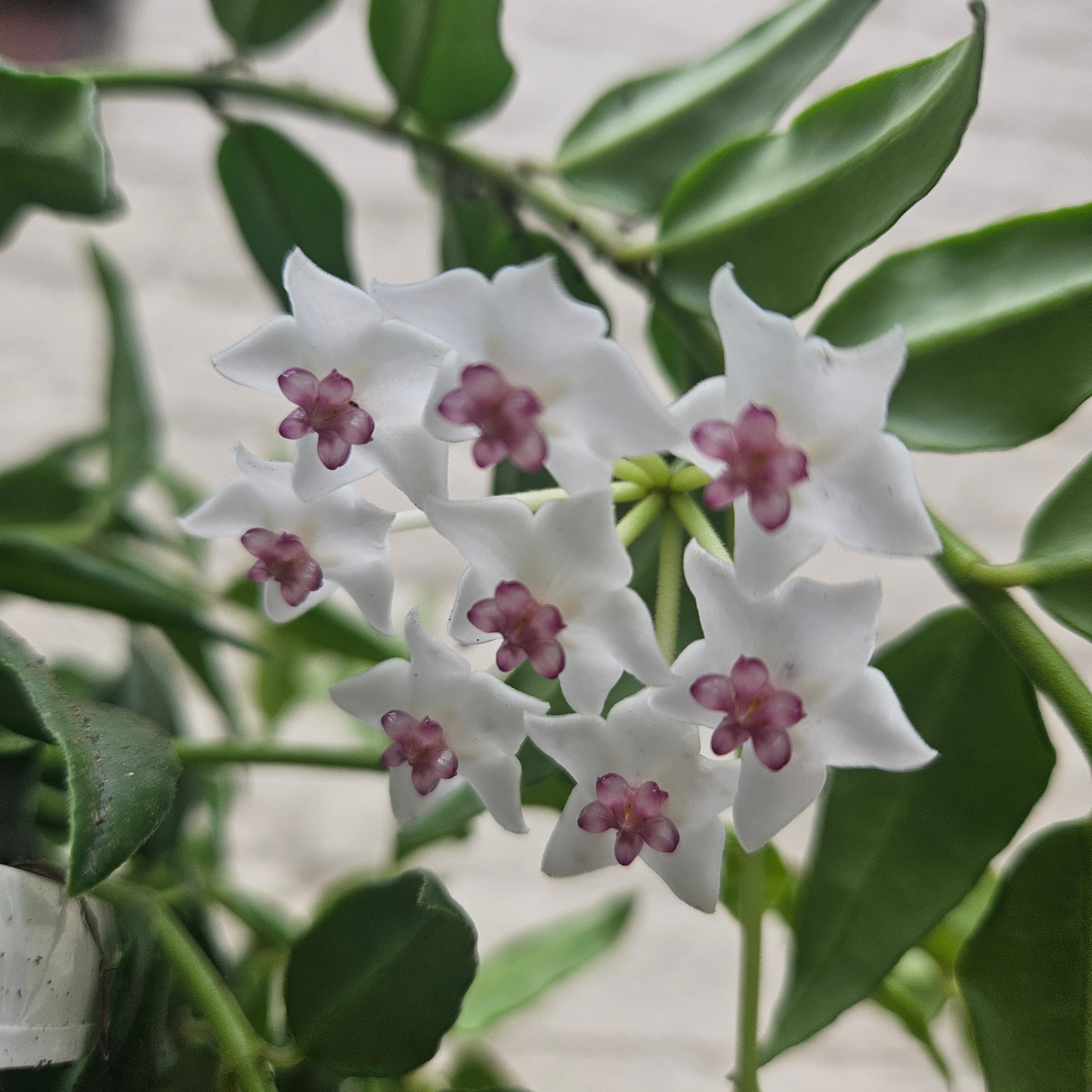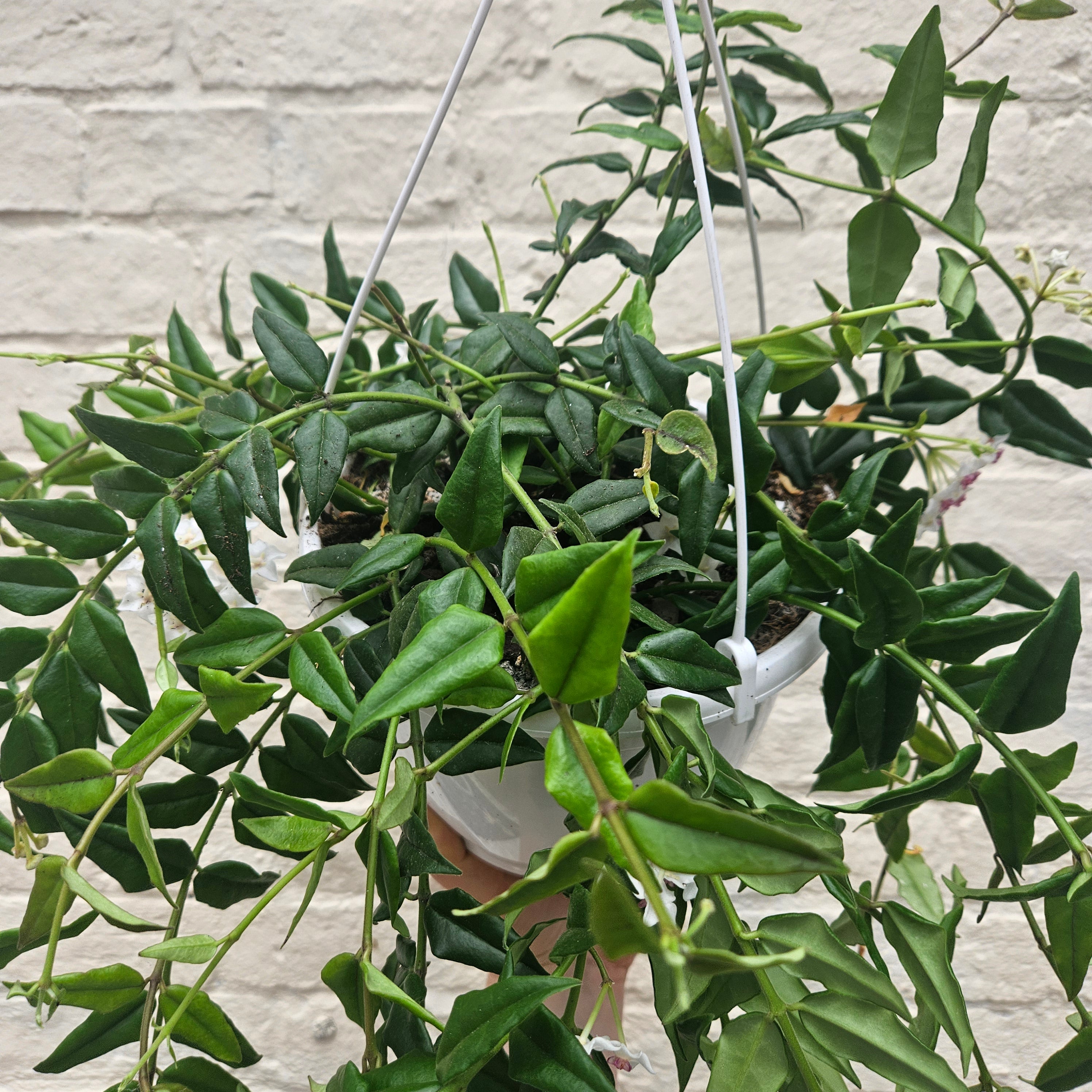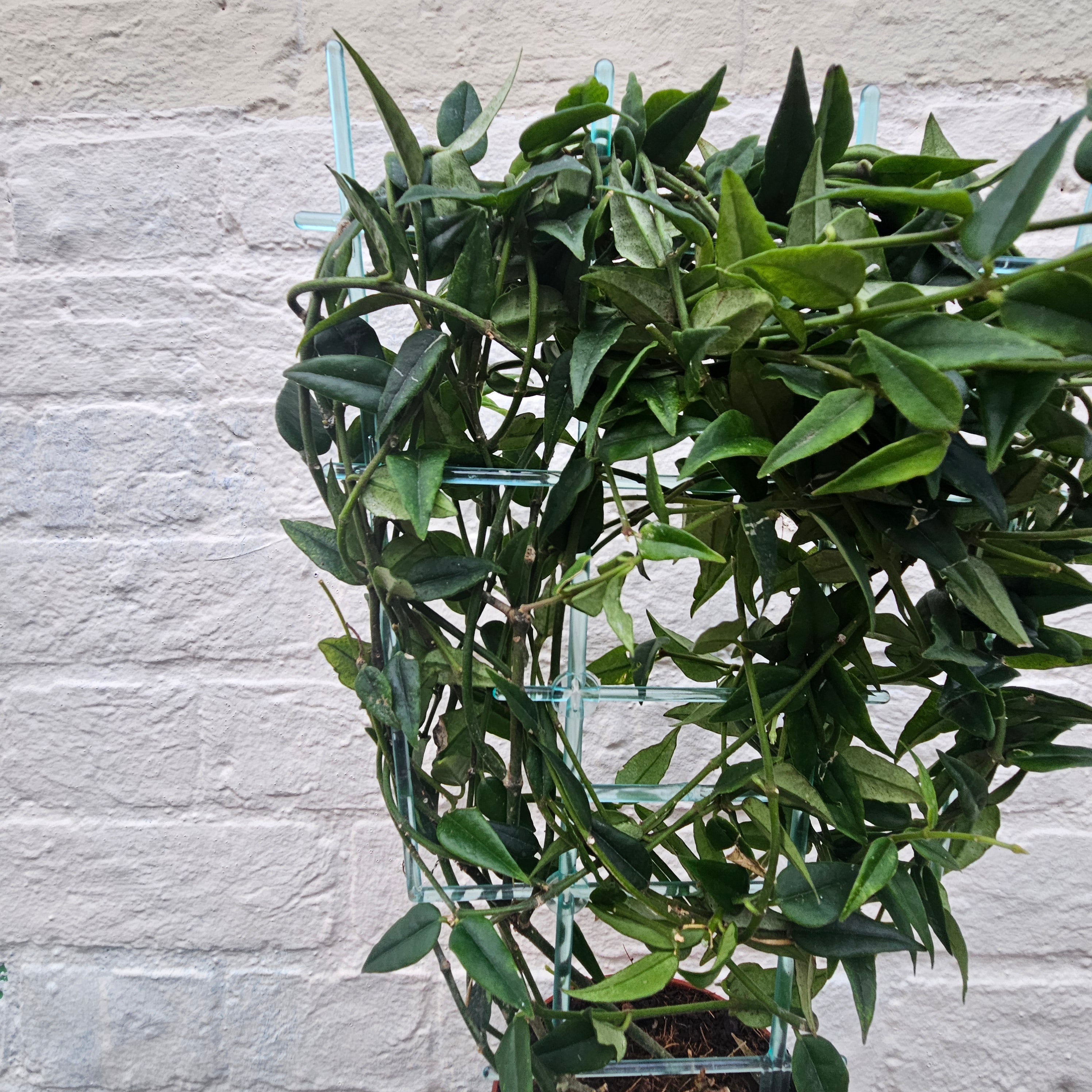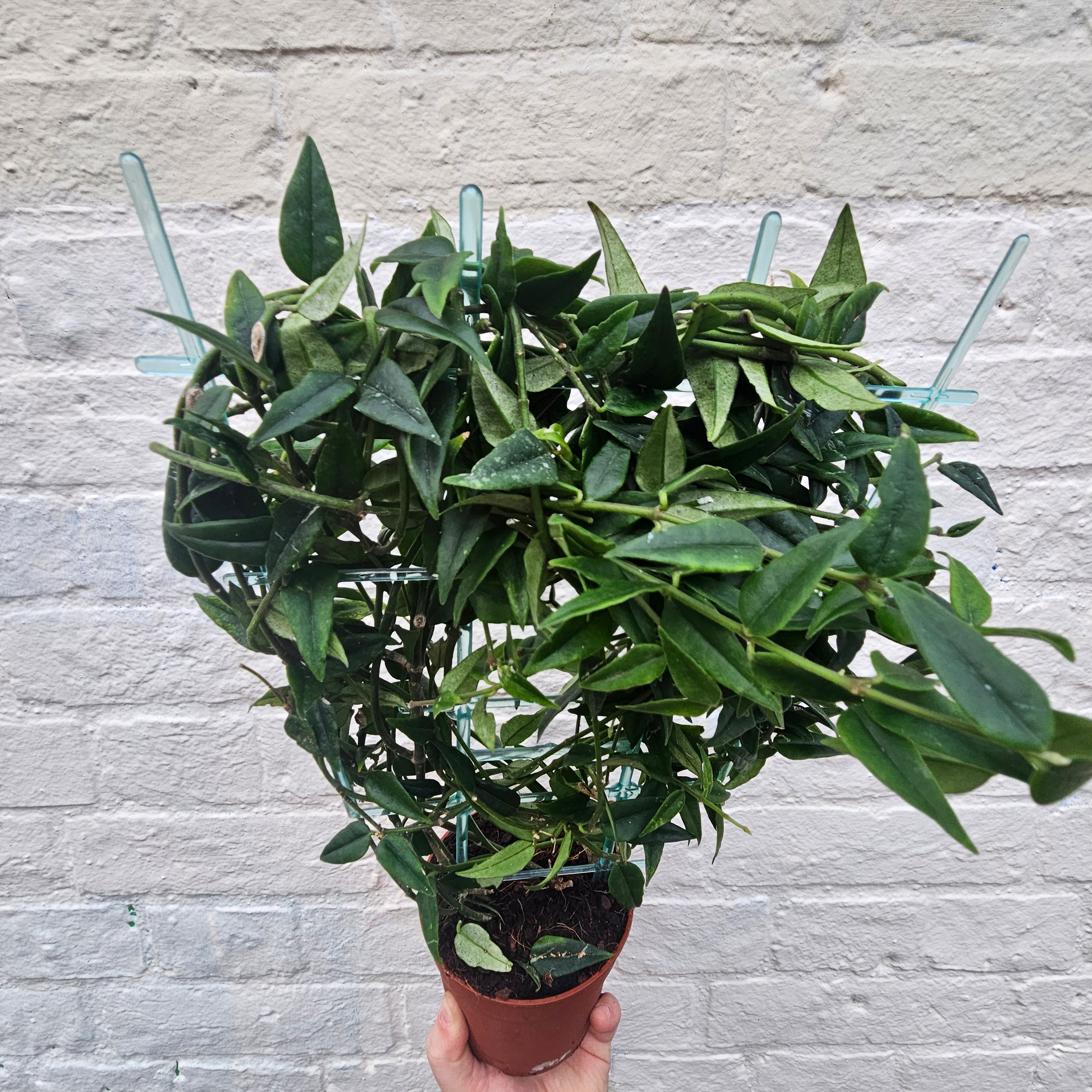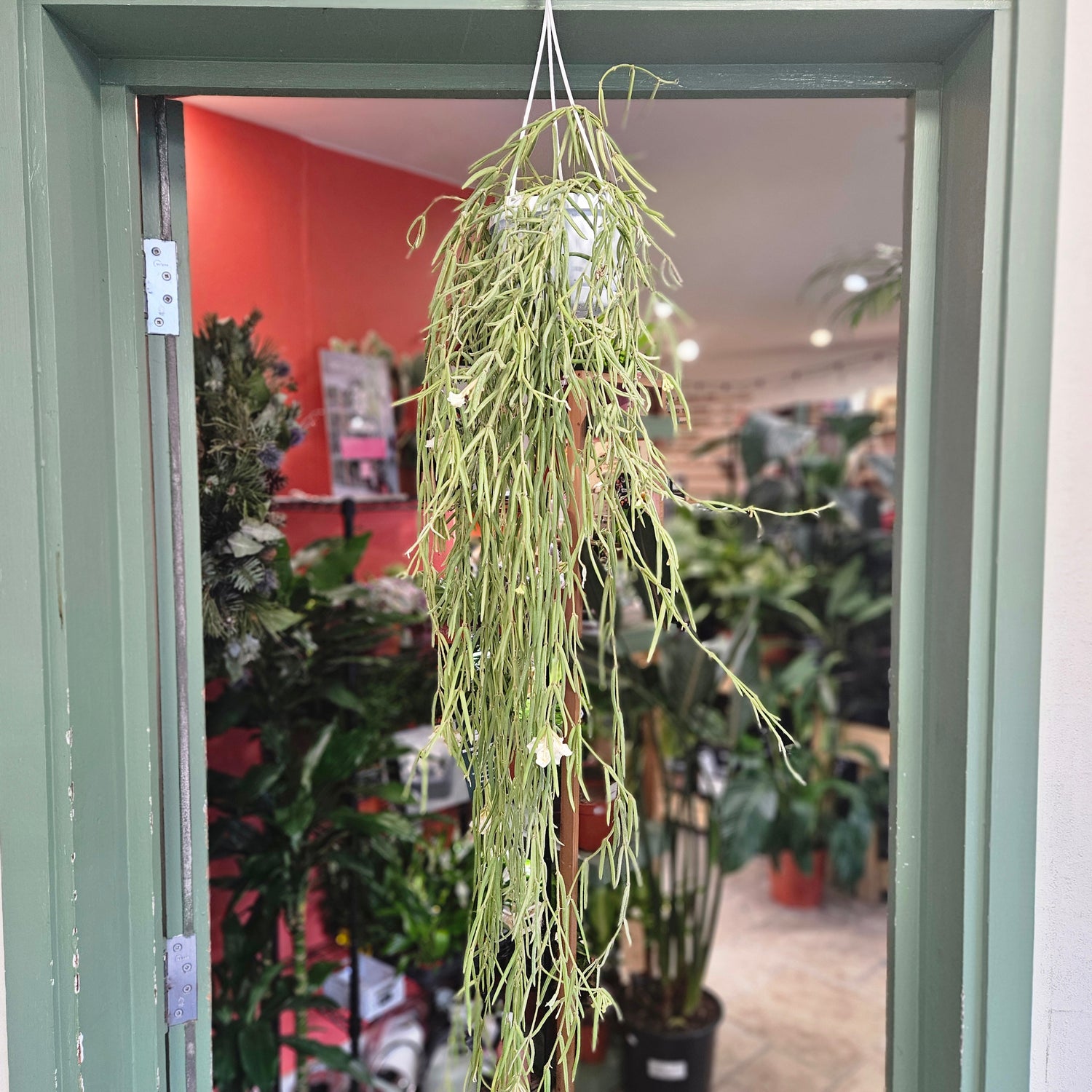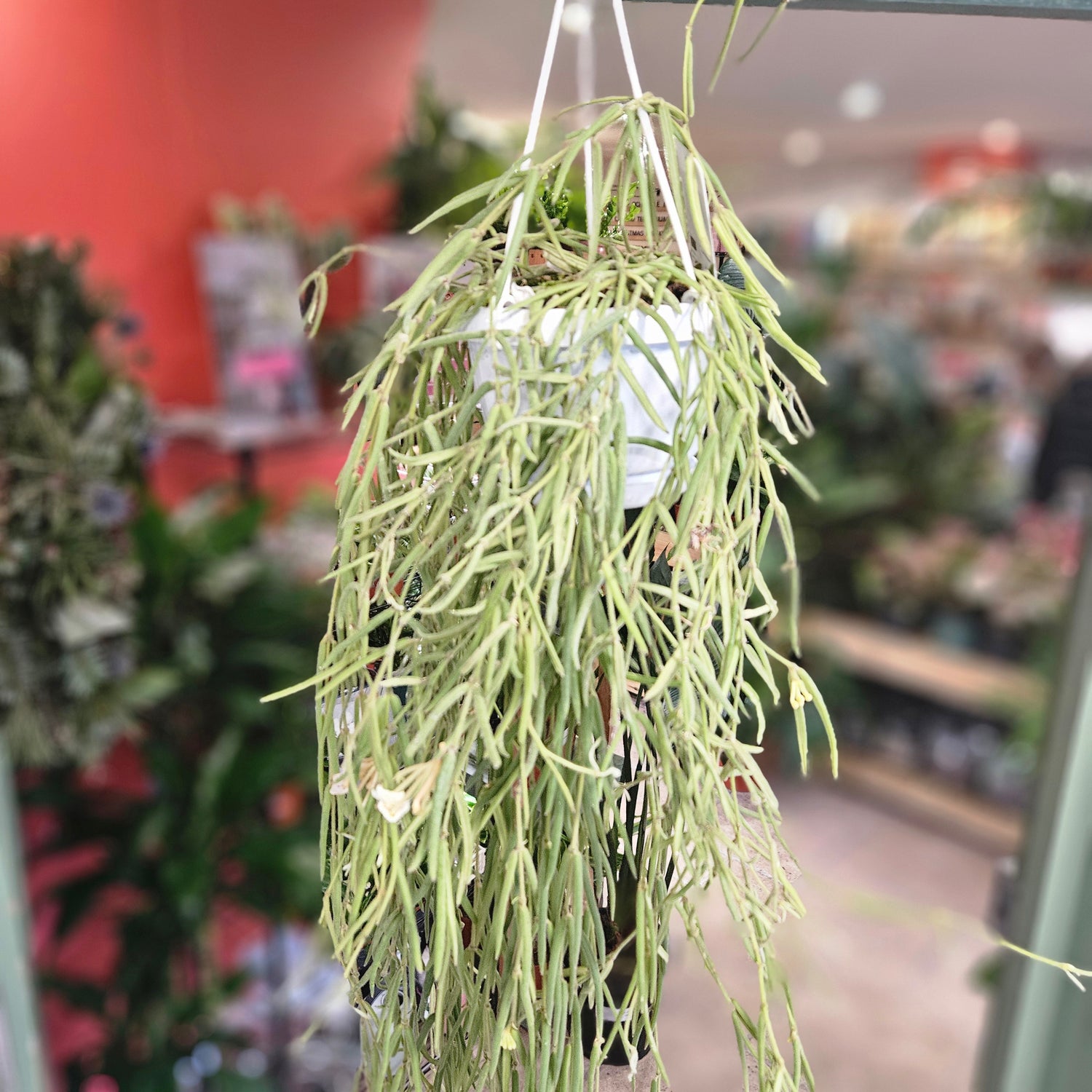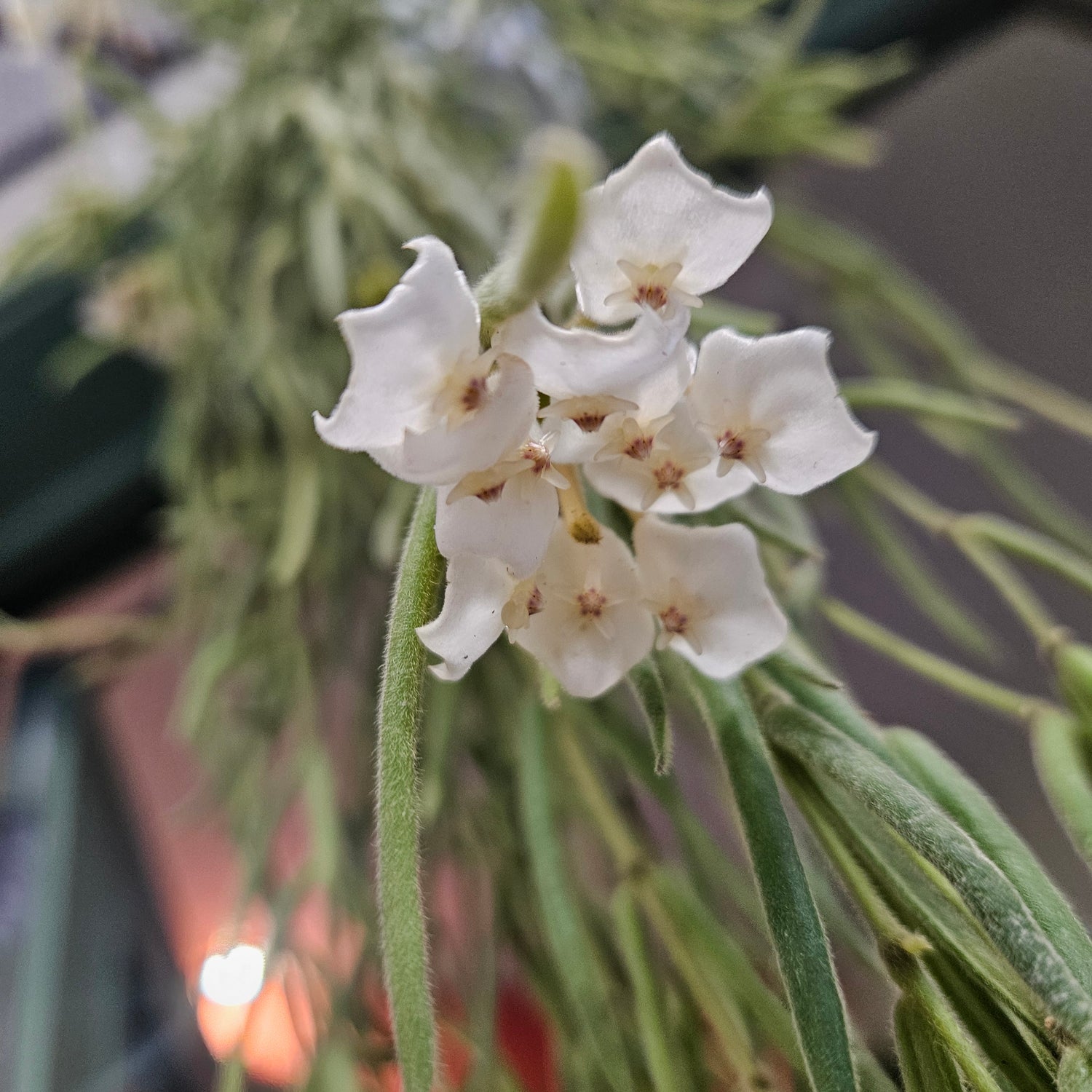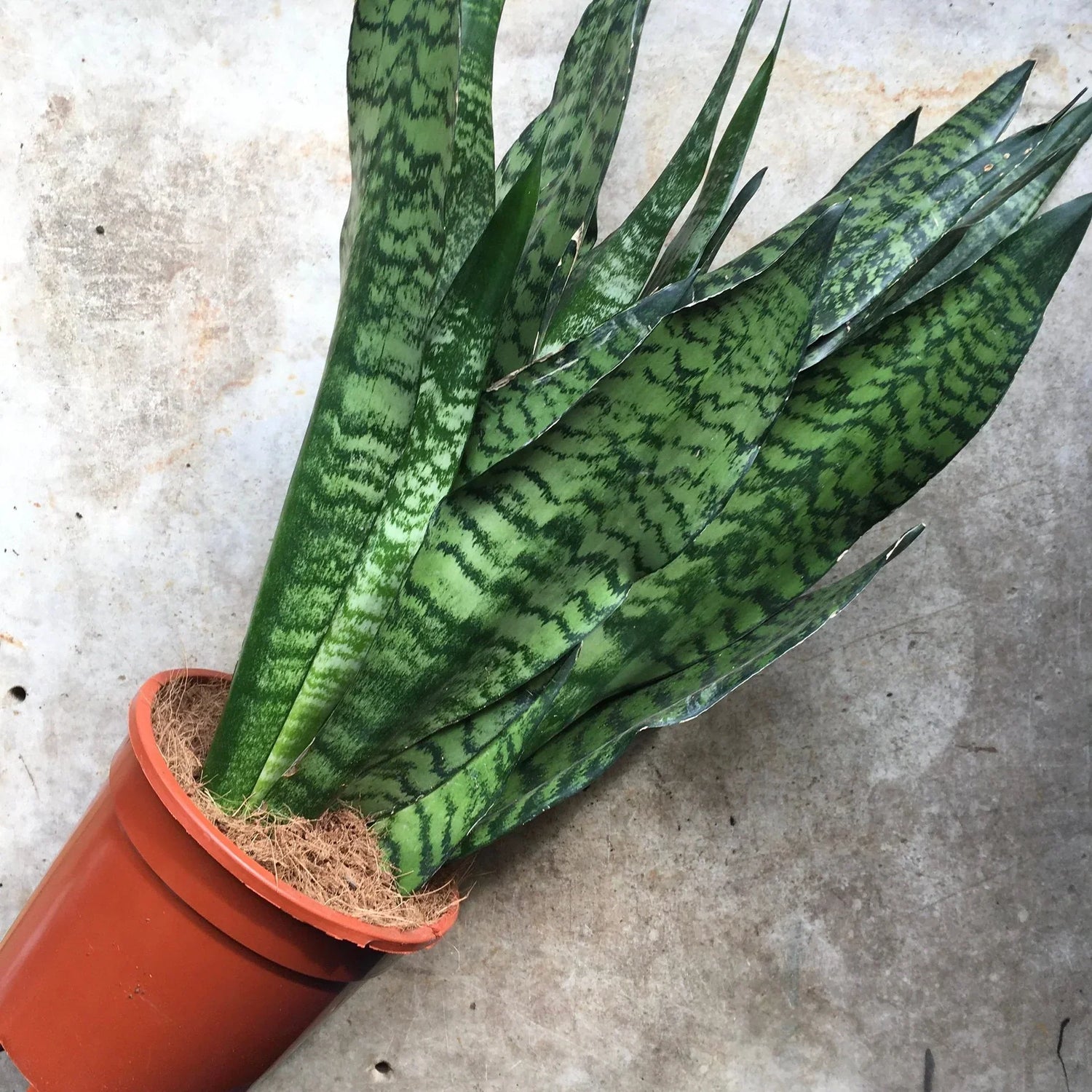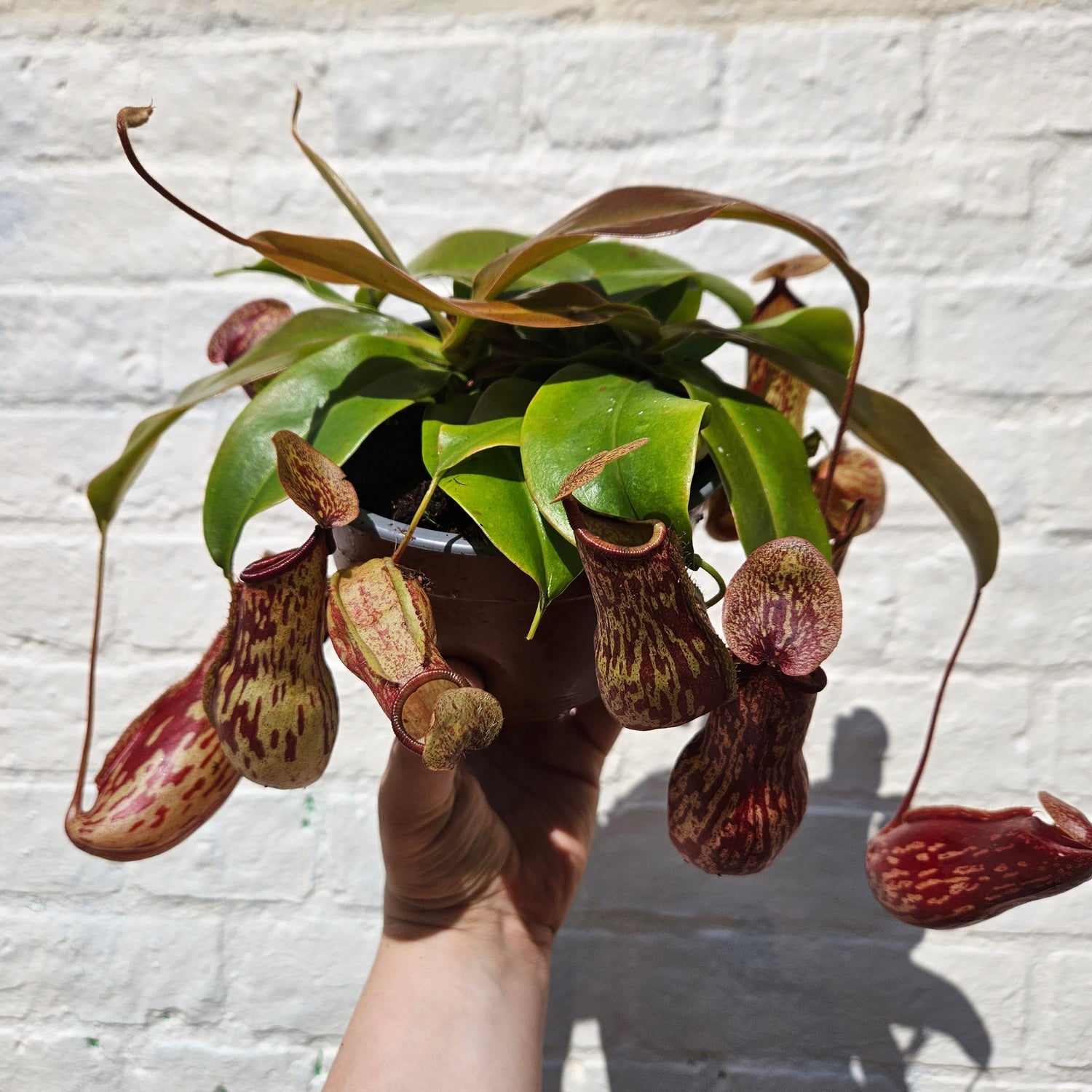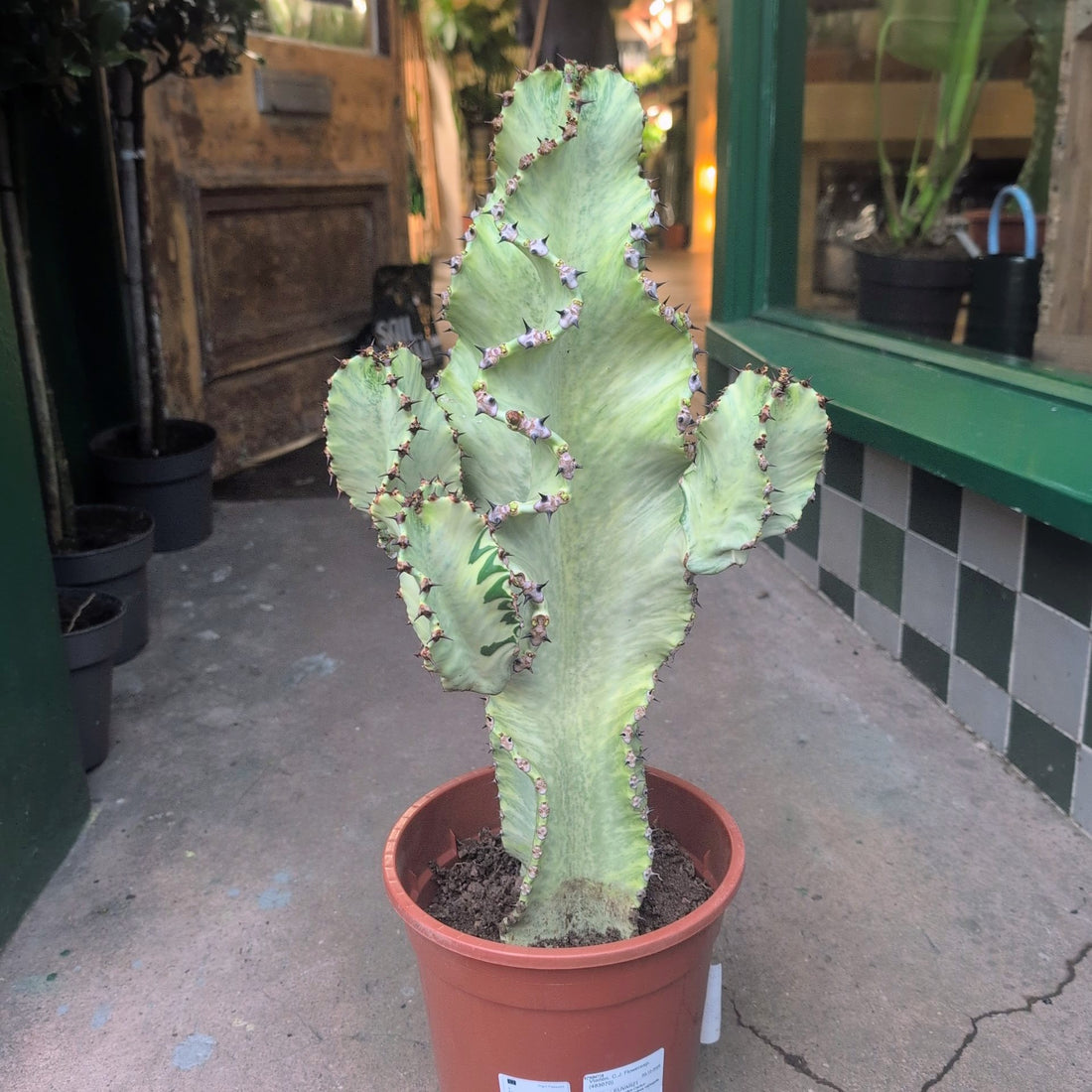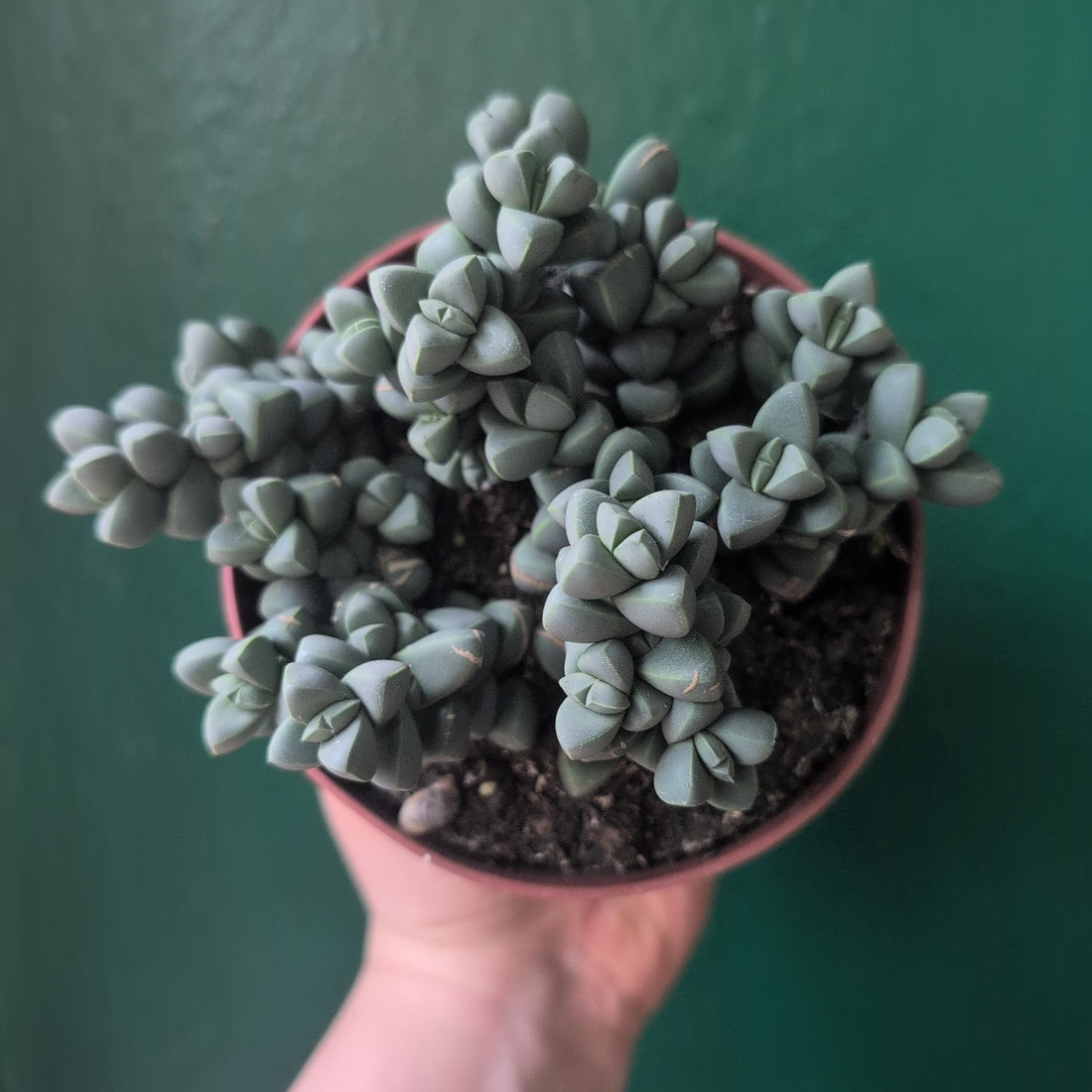Welcome to the wonderful world of Hoya care! Often called Wax Plants thanks to their thick, glossy leaves, Hoyas come in a dazzling variety of shapes, sizes, and colours. Plant lovers treasure them not only for their unique foliage but also for the clusters of fragrant, star-shaped flowers they produce. These versatile vines can be trained to climb a support or left to cascade beautifully from a hanging basket or shelf. In this guide, we’ll take you through everything you need to know to keep your Hoya healthy and thriving—from light and watering tips to propagation, troubleshooting, and styling ideas.
Hoya Overview
Hoyas are semi-succulent plants native to Eastern Asia and Australia, where they thrive in habitats ranging from cool mountainous regions to warm coastal areas. In the wild, many grow epiphytically—climbing tree trunks or creeping across rocky forest floors.
Their thick, waxy leaves act as water stores, allowing them to survive short periods of drought. Hoyas also produce twining vines, which wrap around nearby objects to help them climb and spread.
Perhaps their most sought-after feature is their clusters of small, fragrant, star-shaped flowers. Depending on the species, blooms can range in colour from white and pink to purple and yellow.
As members of the Apocynaceae family, Hoyas boast incredible diversity. With over 500 known species (and more still being discovered), they display a wide range of leaf shapes, patterns, and colours. This makes them the perfect combination of tropical flair and easy-care succulent charm.
- Hoya kerrii – famous for its charming, heart-shaped leaves.
- Hoya curtisii – with its delicate, teardrop-shaped foliage.
- Hoya publicalyx – showcasing long, slender leaves.
- Hoya bella – with neat, diamond-shaped leaves.
Whether you prefer bold, architectural leaves or fine, delicate foliage, there’s a Hoya for every plant lover.
How to Look After a Hoya
Light:
Hoyas thrive in bright, indirect sunlight, ideally near a south-, west-, or east-facing window. A little gentle direct sun in the early morning or late afternoon can be beneficial, but harsh midday rays should be avoided as they can scorch and burn the leaves. If a Hoya doesn’t receive enough light, it may become leggy, stretching toward the sun, and the lack of energy can increase the risk of root rot.
If your home doesn’t get enough natural light, Hoyas adapt well to grow lights—just make sure to keep them on for around 10–12 hours a day. Sheer curtains can help soften intense sunlight, and rotating your plant every week or so will encourage even growth on all sides.
Temperature and Humidity:
Hoyas are happiest in warm, stable conditions, ideally between 20–24°C. Since they are accustomed to tropical environments, it’s best to recreate these conditions at home with both warmth and humidity. A humidity level of 40% or higher is ideal.
To increase humidity, you can use a humidifier, mist the leaves occasionally, place the plant on a pebble tray filled with water, or move it to naturally more humid spaces such as a bathroom or kitchen. Avoid sudden temperature changes, as Hoyas dislike fluctuations—keep them away from cold draughts, radiators, or heaters.
If conditions aren’t right, your Hoya will let you know. Crispy leaf edges often signal low humidity, while yellowing or dropping leaves can be a reaction to cold drafts or sudden temperature shifts.
Watering:
Water your Hoya when the top half of the soil feels dry. Because they can store water in their fleshy leaves, Hoyas will tolerate the occasional missed watering far better than they will sitting in soggy soil. As a general guide, watering every 10–14 days works well, but always check the soil first rather than sticking to a strict schedule.
It’s better to underwater than overwater—excess moisture is one of the fastest ways to cause root rot. Always use a well-draining potting mix and make sure your pot has drainage holes so excess water can escape. During winter, when the plant isn’t actively growing, reduce how often you water, as the soil will take longer to dry out.
Fertilising:
During the growing season (spring and summer), feed your Hoya with a balanced liquid fertiliser every 4 waters, it is always advised to follow the instructions on your fertiliser. Stop feeding in the dormant winter months.
How to Re-pot a Hoya
Repot your Hoya when it becomes root-bound or outgrows its current pot, usually every 2–3 years. Choose a pot that is only one size larger, provide fresh, well-draining soil, and gently transfer your plant, taking care not to damage the roots.Hoyas thrive in a light, airy mix—adding perlite and orchid bark helps create the right texture for healthy roots. Interestingly, Hoyas don’t mind being slightly root-bound; in fact, a snug pot can encourage more prolific blooming.
How to Propagate a Hoya
Propagating a Hoya via stem cuttings is a rewarding way to grow new plants. Follow these steps:
-
Choose Healthy Stems: Select a stem with at least two nodes—the small bumps where leaves emerge. Avoid stems that are weak or diseased.
-
Cut the Stem: Using a clean, sharp knife or scissors, make a cut just below a node.
-
Rooting: Place the cutting in lukewarm water or moist soil. Using a rooting hormone can help speed up root development when planting in soil. Position the cutting in bright, indirect light. Roots usually form within a few weeks. If rooting in soil, gently tug the cutting—resistance indicates that roots are developing.
-
Transplant: Once the cutting has well-established roots, transplant it into a pot with the appropriate Hoya soil mix.
Tips for success:
-
Keep the soil lightly moist but not soggy while rooting.
-
Avoid direct sunlight, which can scorch young cuttings.
-
Be patient—some Hoyas root faster than others, and slower-growing varieties may take several weeks.
How to Prune a Hoya
Pruning your Hoya helps maintain its shape and encourages healthy growth. Remove yellow or brown leaves, as well as overly long or leggy stems. Make clean cuts just above a leaf node, taking care not to cut short stalks or spurs—the areas where flowers emerge. Blooms will grow from the same spur each year, so preserving these ensures your Hoya continues to flower beautifully.
Tip: Use clean, sharp scissors or pruning shears to avoid damaging the plant, and prune sparingly to maintain its natural shape.
How to Take a Cutting from a Hoya
Taking cuttings for propagation follows a similar process as mentioned earlier. Ensure you choose a healthy stem, make a clean cut, and follow the propagation steps.
How Often Should I Water a Hoya
Watering frequency depends on various factors like humidity, temperature, location and pot size. As a general rule, check to see if half the soil is dry and then water. Water less in winter and more frequently during the growing season.
Why Are My Hoyas Leaves Going Yellow/Reddening/shrivelling or spotty?
-
Yellow Leaves: Yellowing can result from overwatering or under watering. If overwatered, many leaves may turn yellow and feel soft or mushy. If under watered, individual leaves will turn yellow and may feel dry or crispy. Adjust your watering routine accordingly.
-
Reddish Leaves: Leaves that develop a reddish tint may be experiencing sun stress—your Hoya is getting more light than it needs. Move it to a spot with bright, indirect sunlight to prevent further stress.
-
Shrivelling Leaves: Shrivelling often indicates under watering. Because Hoyas store water in their leaves, they can survive short dry periods, but prolonged drought will cause the leaves to shrivel. Another cause can be low humidity, which makes the plant use its stored water faster. Increase humidity by using a humidifier, misting the leaves occasionally, placing the plant on a pebble tray filled with water, or moving it to a naturally more humid spot like a bathroom or kitchen.
-
Spotty Leaves: Spots can result from infections or pests:
-
Bacterial infections: Yellow or brown spots
-
Fungal infections: Brown or black spots
-
Pests: Check the underside of leaves for signs of insects
Treat infections with a suitable fungicide or bactericide. For pests, identify the culprit and treat using horticultural soap or beneficial insects which you can find here.
Are Hoyas Poisonous to Cats and Dogs?
No , Hoyas are considered non-toxic to cats and dogs. However it is a good idea to keep it out of reach of children and pets.
With these expert tips, you're well-equipped to care for your Hoya and enjoy its lush, tropical beauty in your home. Happy Wax plant growing!
